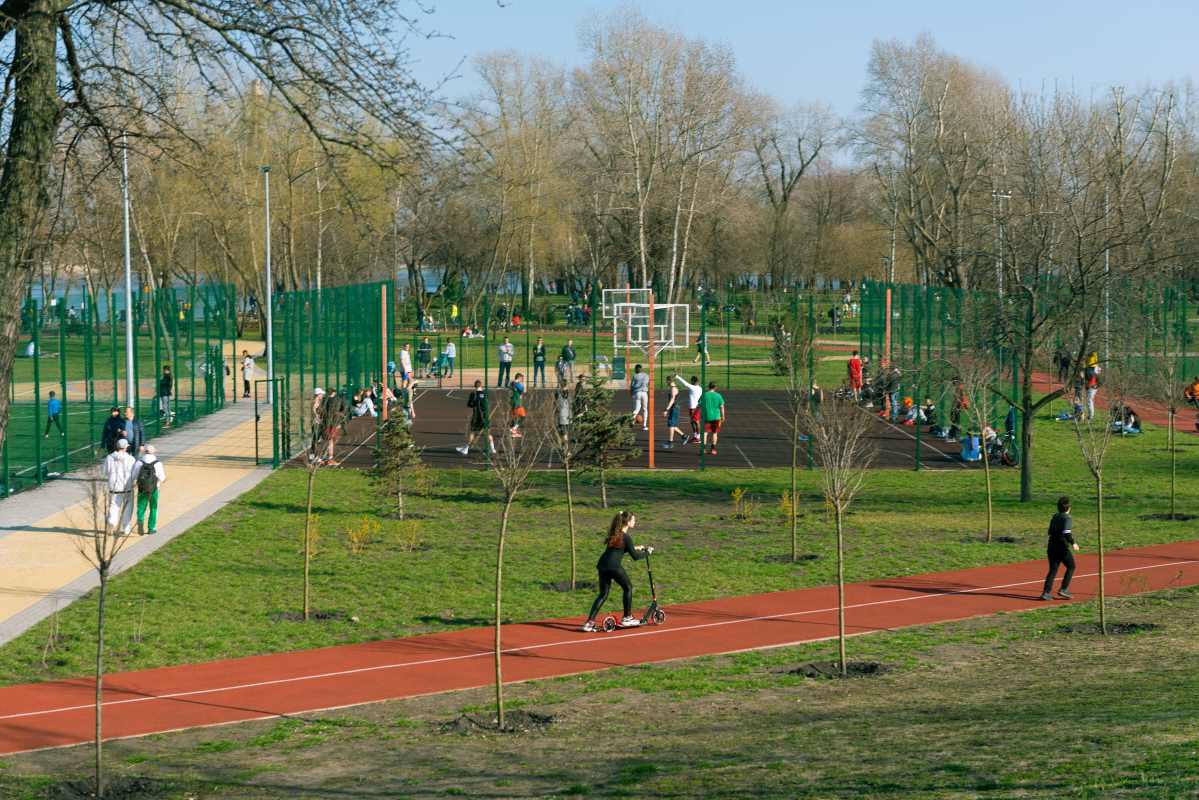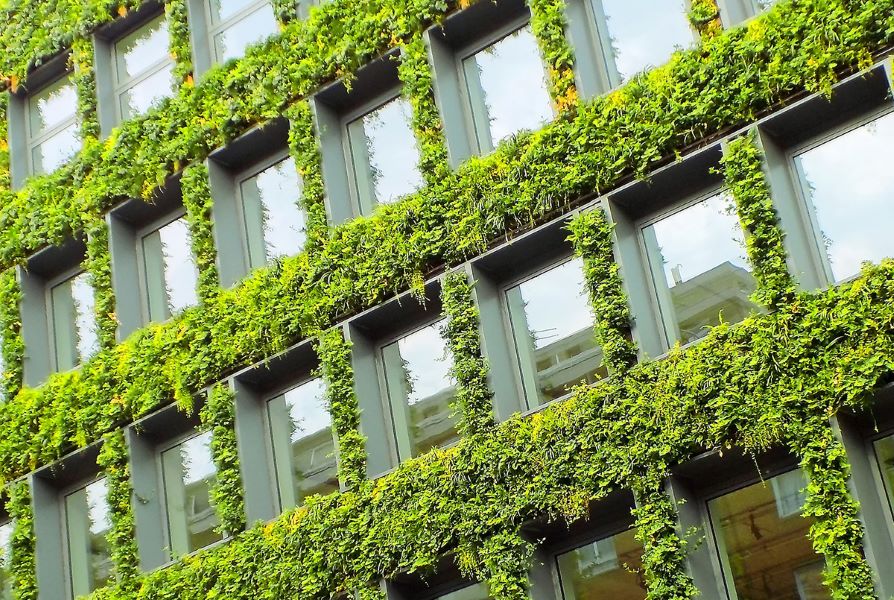Discovering Urban Greenery
What is Urban Greenery and how is it classified?
Urban green spaces play a crucial role not only for the numerous ecosystem services they provide—such as carbon sequestration, prevention of hydrogeological risks, and mitigation of urban heat islands—but also for their significant contribution to enhancing quality of life and citizen well-being.
This article delves into the concept of urban greenery, exploring its various types and the essential functions they serve.
What do we mean by Urban Green spaces?
The term urban green spaces takes on various definitions depending on the context in which it is used. According to ISTAT, ‘urban green spaces consist of green areas located within municipal territories, managed directly or indirectly by public entities such as municipalities, provinces, regions, or the state.‘ From an ecological perspective, they can be described as ‘green spaces where nature can express itself with varying degrees of freedom, with or without human intervention.’
Urban green spaces should be viewed as a unified element, connecting different parts of the city, whether public or private.
The classification of urban green spaces should not be based solely on their physical characteristics but, more importantly, on the functions they serve, which are essential for shaping a city’s overall green infrastructure.
Below, we explore some of the most common and significant categories of urban green spaces.

ISPRA based on ISTAT Data: Predominant types of Public Green Spaces (Report SNPA 2020)
Historic Green Spaces: telling the Story of the City
Historic green spaces include villas, parks, and gardens of significant artistic or historical value, as well as monumental trees, all designated as protected areas under Legislative Decree 42/2004. These green spaces, often among the oldest in a city, are deeply intertwined with urban development and sometimes serve as witnesses to significant historical events. Beyond their vegetation, historic gardens often feature exquisite architectural elements such as statues, fountains, tables, and benches, all of which require careful preservation.

An example of Historic Greenery in Bagnaia, Viterbo: Villa Lante
The primary challenge in managing historic green spaces lies in preserving their original structure while ensuring visitor safety. The presence of centuries-old trees necessitates regular inspections to assess their stability and overall health.
Historic green spaces represent a particularly significant category in Italy and, in some cities, account for a substantial portion of public greenery. A report by SNPA highlights that in many municipalities, historic green spaces comprise over 50% of total public green areas: Matera (98.3%), Monza (84.9%), Pordenone (68.7%), Caserta (61.7%), Lucca (60.9%), and Siracusa (51.1%).
In absolute terms, after Matera—which boasts over 59 million square meters of historic green spaces—the cities with the largest areas are Turin, with approximately 8.3 million square meters (42.1% of total green spaces), and Rome, with nearly 8.4 million square meters (17.7%).
Equipped Green Spaces
Equipped green spaces are small neighborhood parks and gardens, typically under 5,000 square meters, designed primarily for the daily use of local residents. Featuring amenities such as playgrounds, dog areas, and benches, these compact and often scattered spaces play a vital role in providing recreational areas and fostering social interaction within urban settings.
Given their limited size and high foot traffic, it is essential to design these spaces with practicality in mind. Strategic placement of shrubs and trees can create a balance of shaded and sunny areas, while integrating paved zones for play and rest helps minimize wear and tear on the greenery.

Recreational Green Space
Data from the aforementioned report shows that recreational green spaces account for over 50% of total public green areas in certain cities: L’Aquila (79.7%, equivalent to 1.5 million m²), Avellino (59.7%, just over 405,000 m²), Arezzo (52.0%, approximately 1.5 million m²), Prato (50.6%, just over 3 million m²), and Oristano (50.6%, around 761,000 m²).
Overall, recreational green spaces are widely distributed and play a crucial role in promoting physical and mental well-being, thanks to their accessibility and usability compared to other forms of public greenery.
Urban Forests and Large Urban Green Spaces
Urban forests refer to previously uncultivated and undeveloped lands that, due to their size and location, are ideal for planting trees and fostering the natural growth of woodlands within urban environments.
Large urban green spaces include parks, villas, and gardens exceeding 5,000 m². These areas serve recreational, environmental, and cultural purposes, acting as vital “green lungs” for the city.
According to the SNPA report, the highest percentages of large urban parks are found in Gorizia (52.8%, nearly 2.5 million m²), Cuneo (47.6%, about 900,000 m²), Bologna (46.2%, almost 4 million m²), Trani (45.6%, 128,770 m²), Milan (41.6%, 10.3 million m²), and Rome (41.6%, 19.7 million m²).
Street Greenery
Street greenery consists of green spaces and elements that not only serve functional purposes but also hold significant aesthetic and landscape value. Among its primary functions are absorbing solar radiation, reducing glare, and acting as a natural climate regulator by providing shade to pedestrians, vehicles, and road surfaces. Additionally, it plays a crucial role in mitigating harmful gases and airborne particles, improving air quality, and enhancing oxygenation.
Street greenery can be categorized into various types, including tree-lined avenues, flowerbeds on residual surfaces and at road intersections, green strips between roadways and sidewalks, slopes along cuttings, and vegetative elements integrated into parking areas.
Wooded Areas: Green Oases in the urban landscape
Wooded areas are green spaces characterized by extensive forest cover, spanning over 5,000 m², that do not fall within the category of protected natural areas. These spaces play a vital role not only in supporting the environment but also in enhancing the quality of life in urban and peri-urban areas by providing numerous ecological, social, and recreational benefits.
Although they may not always be directly accessible to citizens, wooded areas contribute significantly to environmental health. They help mitigate pollution, combat climate change, support biodiversity, enhance ecological connectivity, and add to the scenic beauty of landscapes. These areas are most prevalent in mountainous regions, both in the Alps and the Apennines.
The highest percentages of wooded areas are found in cities such as Rieti (94.6%), Trento (90.5%), Carbonia (86.3%), Sondrio (85.1%), Terni (83.5%), Potenza (82.9%), Catanzaro (81.4%), and Busto Arsizio (80.5%). In some of these cities, the forested areas cover vast stretches: for instance, in Trento, they extend over 43.4 million m², in Rieti over 14.9 million m², and in Terni nearly 14 million m² (source: SNPA report).
Untamed Green Spaces: an opportunity for Nature and the Community
The concept of untamed green spaces refers to urban areas that are neither cultivated for agriculture nor regularly maintained. Characterized by spontaneous vegetation and the absence of planned interventions, these spaces represent a significant yet often underestimated component of the urban landscape. Despite their lack of active management, untamed green spaces provide numerous benefits and opportunities for both the environment and the community.
Though not always accessible, untamed green areas play a crucial environmental role. They support biodiversity, including native flora and fauna, help prevent hydrogeological risks, and contribute to combating climate change.
The highest percentages of untamed green spaces are found in Como, the only northern city with such high values, at 85.9% (nearly 5 million m²), followed by Olbia (65.1%), Quartu Sant’Elena (63.9%), and Messina (61.2%). In absolute terms, the largest extent of untamed green space is in Reggio Calabria, with 7.2 million m², accounting for 37.9% of the city’s total green area.
Other categories of Urban Green Spaces
Green Roofs and Vertical Gardens: Sustainable Solutions for Urban Spaces
Green roofs and walls, rapidly growing in popularity, offer numerous benefits. Studies show that plant systems help mitigate summer temperature spikes through evapotranspiration and protection from direct solar radiation, reducing the effects of heat islands in urban areas. Often referred to as “green coats,” these solutions can lower indoor temperatures by up to 3°C during the summer and cut thermal flux by almost 50% through shading and plant transpiration.

Example of Green Roofs and Vertical Gardens
Urban Gardens: a shared resource
Urban gardens are a valuable asset, offering small plots of land owned by municipalities for domestic cultivation and recreational gardening. These spaces have a significant impact on various aspects of urban life, promoting both individual and community well-being. Their non-profit nature gives them distinctive value, focused on personal food needs and fostering healthy, sustainable eating practices.
Public outdoor Sports Areas: spaces for well-being and socializing
Public outdoor sports areas are an essential component of urban fabric, providing spaces for physical activity and enjoyment accessible to all citizens. Designed to meet the recreational needs of the community, these spaces include a variety of facilities such as sports fields, pools, multi-use courts, and green classrooms, each playing a key role in promoting an active and healthy lifestyle.
In Belluno, outdoor sports areas represent the most common type of public green space, accounting for 22.2%. In absolute terms, cities with the largest outdoor sports areas include Florence (1.6 million m²), Ferrara, and Ravenna, both with over 1 million m² (SNPA Report).
School Gardens: spaces for learning and growth
School gardens are a valuable resource for educational institutions, offering much more than simple green spaces. Specifically designed for schools, these environments serve multiple functions, integrating nature into the daily educational experience and contributing to students’ overall well-being.
School gardens, for example, provide students the opportunity to learn directly from nature, discovering cultivation techniques and understanding environmental sustainability. These spaces not only teach practical skills but also impart fundamental ecological values. Additionally, outdoor study areas allow students to engage in educational activities in a more stimulating and natural setting, promoting more interactive and immersive learning.
Recreational and socialization spaces are another crucial aspect of school gardens. Playgrounds and equipment encourage physical activity and social interaction, helping children develop social and motor skills in a safe, stimulating environment. Benches and relaxation areas offer spaces for rest and informal conversation, promoting a positive school climate.
Sensory gardens, with a variety of plants and fragrances, stimulate students’ senses, fostering multisensory educational experiences that enrich their cognitive and sensory development.
Residual Green Spaces: botanical gardens, zoos, and more
Within the context of urban greenery, there are some green spaces that, while not fitting the traditional definitions of parks, gardens, or recreational areas, have a unique and often undervalued importance. These spaces, including botanical gardens, zoos, and others, represent residual classes of green that, although managed for specific purposes, significantly contribute to urban life quality and the surrounding environment.
Transforming cities with nature: the Urban Evolution Project
The adoption of green infrastructure and nature-based solutions (NBS) is a key strategy for addressing current and future challenges related to climate change and its impact on our daily lives. The Urban Evolution research project aims to leverage new technologies such as remote sensing and artificial intelligence to monitor urban pollution and highlight the benefits of green spaces and NBS.
The primary goal is to enhance and optimize urban greenery, with positive effects on air quality, urban microclimates, heat island mitigation, and other critical aspects of well-being for cities and their inhabitants.
Curious to learn more? Read also: Urban Evolution Project: Earth Observation and Nature-Based Solutions to Combat Pollution!



